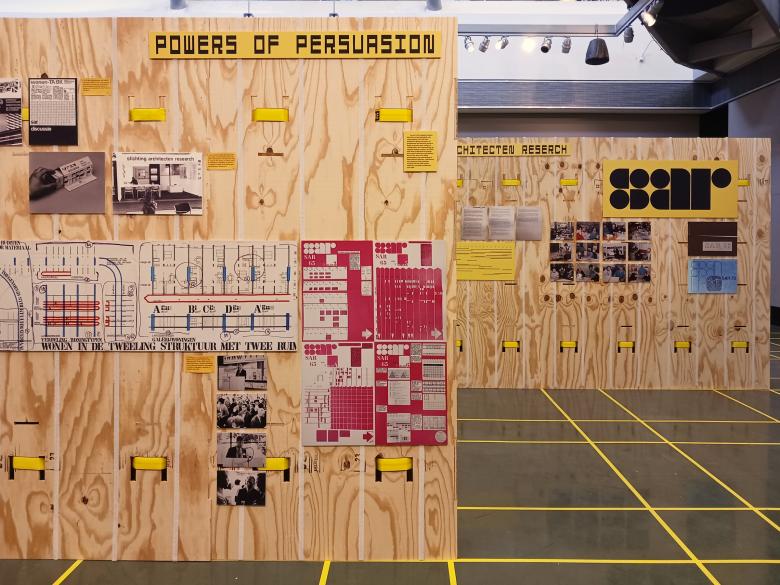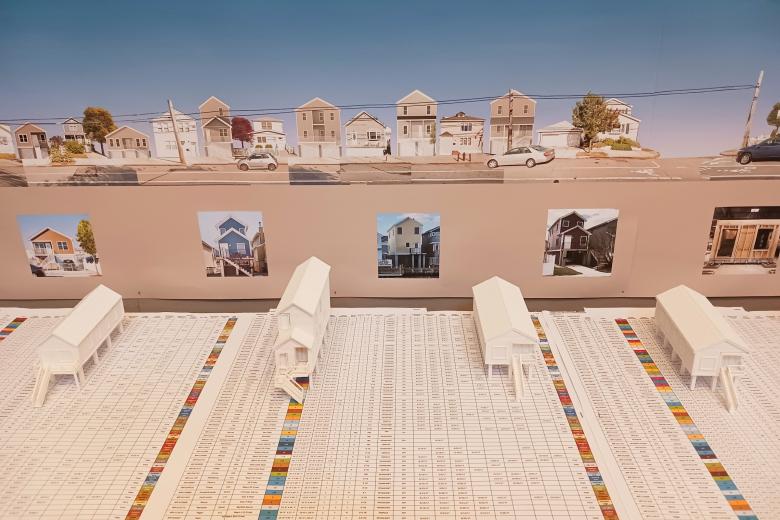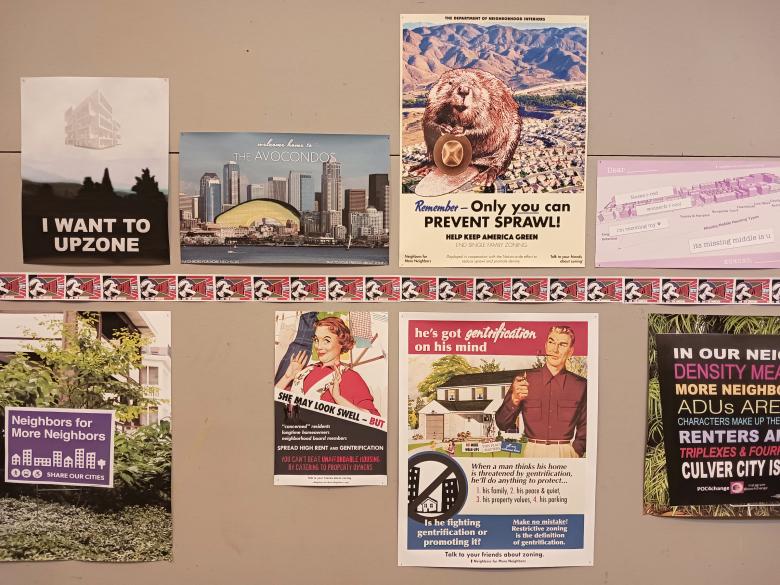Flexibility and Resident Agency in Housing
Mass Support
All photographs by John Hill/World-Architects
Mass Support: Flexibility and Resident Agency in Housing is an exhibition now on display at the City College of New York that “examine[s] the promise and pitfalls of overlooked knowledge from the recent past,” specifically the Stichting Architecten Research (SAR) think tank in the Netherlands. World-Architects visited and snapped some photos.
On display at CCNY's Spitzer School of Architecture until May 7, Mass Support is an updated version of an exhibition of the same name that was shown at Eindhoven Technical University (TU/e) in the summer of 2022. TU/e was a fitting location for a show on SAR, considering that it was initially led by Dutch architect N. John Habraken, who also set up TU/e's new Department of Architecture in 1967.
In the years SAR was active, between 1964 and 1990, the group “proposed a radical new way of thinking about housing,” per the exhibition text, “fusing the efficiency of industrial construction with the flexibility of user customization.” The NYC iteration of the exhibition adds ten recent projects that resonate with the legacy of SAR’s work, “from new models of social housing in Berlin and Barcelona to new applications of prefab construction in Beijing and Brooklyn.” Below is a visual tour of the exhibition with brief commentary in the captions.
As part of the exhibition, the Spitzer School of Architecture is hosting an online symposium on April 26, when “panelists will share architectural strategies that connect to broader, structural issues in housing today.” Register for the free event via the link.


Whereas the 2022 iteration in Eindhoven featured archival drawings and other documents mounted on panels attached to steel studs, the CCNY iteration uses box-like plywood partitions and Velcro.
Hundreds of SAR artifacts (most appear to be reproductions) are attached to the plywood partitions, which follow the grids on the floor of the atrium and are organized into thematic sections.
Spitzer students and other visitors to the exhibition could spend days poring over the SAR literature, such as this brochure systematizing their design methodology.
Other archival images are easier to digest though also clearly relevant to contemporary concerns.
While the majority of the drawings and documents mounted to the plywood pertains directly to SAR, some of it shows work by architects inspired by them or aligned with their tenets of flexibility; seen here, for instance, are The City of the Captive Globe Project by Rem Koolhaas and Madelon Vriesendorp, and drawings by Yona Friedman.
Another wall shows the famous — and now dearly departed — Nagakin Capsule Tower by Kisho Kurokawa; the plug-in modules, though never swapped out, clearly embodied the flexibility espoused by SAR.
Many of SAR's ideas were expressed in books written by Habraken and others; Supports: An Alternative to Mass Housing, first published in Dutch in 1961, was his most famous and influential, such that it lent the exhibition its name.
The influence of the books is evident in the languages they have been translated into — English, but also Spanish, as seen here in one of the books that can be flipped through in the exhibtion.
Models, though in the minority in the exhibition, include Keyenburg, a group of apartment buildings designed by Werkgroep KOKON with 152 units that could be combined by tenants.
The standout model is located in a large open area at the far end of the exhibition, where a bench next to the model invites visitors to sit down.
Once seated, they can arrange the model pieces to create unit layouts.
The models illustrates the importantly of flexibility for SAR, but also the input of future tenants — people who are left out of the design of most residential developments today.
The perimeter walls of the atrium are the setting for the ten recent projects that resonate with the legacy of SAR’s work, including Lacol's famous La Borda cooperative housing project that won an EUmies Award in 2022.
Another award-winning project on display is the San Riemo residential building in Munich; the cooperative housing project designed by ARGE SUMMACUMFEMMER BÜRO JULIANE GREB won the DAM Preis 2022.
Among the other projects is Patch 22, "an outsized wooden building with a great degree offlexibility," per its architect, FRANTZEN et al.
Lastly, Neighbors for More Neighbors, launched in 2017 to advocate for additional density in residential neighborhoods in Minneapolis, Minnesota; their efforts led to the city's abolishment of single-family zoning in late 2018, something other local governments in the US are embracing.



















